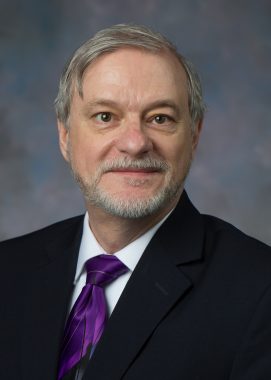Surge in Telehealth Brings Access, Convenience to Rare Disease Patients

A rare disease puts an economic burden on the patients, families, and caregivers that it affects, and will no doubt be an integral part of discussions on Rare Disease Day 2022, which brings international awareness about the more than 300 million people living with rare disorders.
Part of that burden, estimated at nearly $1 trillion, is derived from traveling long distances to obtain medical care, causing patients to miss work or school for doctors’ visits, paying high prices at the gas pump, and perhaps purchasing wheelchair-accessible vehicles.
A pragmatic solution has been around for a couple of decades, but only recently has taken center stage.
Enter telehealth.
The convenience of telehealth — its ability to reach patients in rural areas and prevention of person-to-person contact throughout a two-year pandemic — has made it popular. During the last week of March 2020, the Centers for Disease Control and Prevention tracked a 154% increase in telehealth visits compared with the same period in 2019. An analysis by McKinsey & Company, a global consultancy firm, found that compared with pre-COVID-19 levels, there was a 38-fold increase in telehealth use in February 2021.
According to the research firm Insider Intelligence, 76.3 million Americans used telehealth in 2021. That number is expected to swell to 104.7 million by 2025.

Cynthia Horner is the medical director for Amwell, a health systems technology company. (Photo courtesy of Amwell)
“That is a genie that is not going back in the bottle,” said Cynthia Horner, MD, medical director at Amwell, a global health systems technology company that provides telehealth solutions for more than 2,000 hospitals and 55 health plans.
A number of technological breakthroughs, combined with the pandemic, have made telehealth a greater possibility. These innovations include improved broadband coverage, the proliferation of cell phones with high-quality video, biometric monitoring apps, and wearable devices.
“The ability to gather biometric data and transmit electronically into a digital record transforms the ability to deliver high-quality care,” Horner said.
In interviews with rare disease patients, doctors in the U.S. and internationally, and experts in telehealth, Bionews, the publisher of this website, revealed that the rapid increase of this medical sector won’t, for now, overtake traditional visits with physicians. Patients and doctors say it simply cannot replace some needed in-person evaluations, and there are a number of regulatory hurdles telehealth must surmount before it becomes the norm.
On the flip side, however, they also said telehealth can solve some of the issues brought on by rare diseases — fatigue, impaired movement, and distance from medical specialists. It also can improve health equity and clinical trial efficiency.
The promise of telehealth
Patients have had, for the most part, positive reviews of telehealth. At Nationwide Children’s Hospital in Columbus, Ohio, about 10% of all ambulatory (able to walk) patient visits are being done via telehealth, with the biggest category being behavioral health. According to Kim McBride, MD, division chief of genetic and genomic medicine at Nationwide Children’s — who sees patients from Ohio and across the U.S. — the overall satisfaction rate of patients was 92% for telehealth visits compared with 91% for in-person visits.
Frank James, an 82-year-old living in Kansas City, Missouri, has idiopathic pulmonary fibrosis (IPF), marked by scarring of the lungs, leading to shortness of breath. He said that telehealth erases logistical hurdles. Seeing his physician online circumvents the breathing challenge he incurs when moving from valet to the doctor’s office located in a high-rise building.

Damian Washington, a multiple sclerosis patient, said telehealth makes going to doctor’s visit a breeze. (Photo courtesy of Damian Washington)
Richard Shelby, 67, another IPF patient living in Danville, Kentucky, had the same impression overall. Most of the conversations he has had with a doctor could be replicated via telehealth.
“It’s nice to be in his office and see him face-to-face, but I didn’t feel that the care was being compromised by talking with him over the phone as opposed to sitting down across from him,” Shelby said.
Even with the extra work to get to the doctor’s office, James felt as if he gleaned more from in-person visits. He said his doctor can figure out any issue by listening to his lungs, performing diagnostic tests, and observing his level of comfort face-to-face. But on telehealth, James had to answer more questions from his doctor that he wasn’t used to answering.
“The inadequacies were mine, not his,” James said. “I felt like I was not able to help him.”
For those who are younger, like Damian Washington, 40, who has relapsing-remitting multiple sclerosis (MS), telehealth has been a breeze. He already deals with movement difficulties, vision loss, and low energy because of MS.
“If your symptoms can pose little hurdles to you getting to your doctor, then those little hurdles are gone so now you can just square up with your doctor and have real talk without the energy loss,” said Washington, who lives in Los Angeles, California, and produces videos about MS.
Providers’ perspectives
For Amwell’s Horner, also a veteran family physician, telehealth can help overcome social determinants of health, which, according to the CDC, include healthcare and education access and quality, economic stability, and the neighborhood environment. If a person is working two jobs and cannot afford to miss a day to visit a clinic, telehealth could be an option that alleviates the burden of missing those wages, for example.
Also, many patients must travel long distances to visit a physician specializing in rare diseases, which can further affect a person’s health outcomes. A 2019–2020 survey among 1,108 U.S. rare disease patients, caregivers, or family members conducted by the National Organization for Rare Disorders (NORD) found that 39% of respondents had to travel 60 or more miles to access medical care.
Horner noted two aspects of telehealth that can be especially helpful for rare disease patients. Telehealth negates the risk of transmission of viruses like COVID-19 because patients do not have to interact with anyone in person. And for patients who are enrolled in clinical trials and face a series of follow-up visits, telehealth can reduce the number of times they have to travel, relieving the entire family from that burden.
Sheral Kachpile, a cardiovascular and respiratory physical therapist with a private pulmonary and cardiac rehab center practice seeing patients, including those with IPF, in Mumbai, on the west coast of India, agreed that the convenience of telehealth is helpful. Many of these patients need oxygen and it often is impractical or impossible to travel with heavy tanks. Plus, in her area, similar to rural areas in the U.S., these kinds of centers are few and far between.

Kim McBride is division chief of Genetic and Genomic Medicine at Nationwide Children’s Hospital in Ohio. (Photo courtesy of Nationwide Children’s Hospital)
One of her patients, a 78-year-old woman with pulmonary fibrosis (PF) who lives in Northern India, started telehealth last May after an in-person assessment and consultation. Kachpile sees the patient online twice per week for 45 minutes and has charted improvement in functional capacity and lung capacity in the virtual assessments done every six weeks. Kachpile had to teach the patient how to monitor her own vitals and the patient’s grandchild had to help set up the video call.
“It [telerehab] helps pulmonary fibrosis patients, but [only] if a proper monitoring, proper assessment and a proper rehab setup or mini set-up guided by a respiratory therapist is there,” she said. That set-up usually entails a pulse oximeter, dumbbells, an indoor foot pedal exerciser, TheraBands, a blood pressure machine, and an incentive spirometer.
At Nationwide Children’s, Kim McBride sees patients with inherited and genetic diseases in the areas of heart-related disorders, neurodevelopmental problems, intellectual disabilities, metabolic issues, and rare conditions. McBride needs to see and physically examine patients at least once per year. But for minor problems that emerge between visits, telehealth gets the job done. McBride has enough experience that he usually knows what’s going on based on video chat alone.
“Someone who’s more complicated — who needs detailed exam notes — does not work for telehealth unless it’s focusing on individual problems,” McBride said.
And for new patients, it’s necessary to start with an in-person visit, he added. A physical examination can help McBride make a diagnosis and lead patients in a direction where they could find more answers.
A long journey forward
But challenges to greater proliferation of telehealth remain. One of the biggest difficulties for providers is payment parity for reimbursement through insurance. But as long as the U.S. continues its public health emergency due to COVID-19, Medicare will pay higher telehealth reimbursement rates to that of in-person visits, up from about $14–$41 to about $60–$137.
Medicare typically sets the stage for private insurers to follow suit, but this isn’t always the case. McBride said some insurance companies would not allow him to bill the highest level of service for telehealth, even though he has provided that level of care.
Medical coverage also has an impact on the way Horner treats her patients.
“As a physician, I am first and foremost acutely aware of the healthcare needs of my patients,” Horner said. “So, when they are not financially covered, that’s a tension that I’m going to feel significantly.”
According to the 50-State Survey of Telehealth Commercial Insurance Laws conducted by Foley & Lardner LLP, 22 states, as of February 2021, have laws that address payment parity issues. Fourteen of them achieved that goal, that is offer “true payment parity,” the survey found.
Telehealth recognizes no state lines, as it can be done with anyone in the U.S. who has an internet connection or smartphone. But that also makes it more difficult for doctors, who need to secure licenses in each state where they practice medicine, to see patients from afar.
Some progress has been made, but only for a fraction of states. The Federation of State Medical Boards reports that 23 U.S. states and territories allow long-term or permanent interstate telemedicine. Another solution to the interstate practicing issue has been The Interstate Medical Licensure Compact, an agreement between 35 states and territories, and the District of Columbia, that streamlines the process of licensing in different states.
Finally, there are still areas in the U.S. where phone and internet service coverage is spotty and people cannot afford to purchase smartphones. According to research by BroadbandNow, a company that connects people with local internet service providers, 14 million people have no access to fixed broadband service.
Nationwide Children’s is experimenting with ways to bring its doctors to rural areas in Ohio via a hybrid approach to surmount that hurdle. A nurse or nurse practitioner would coordinate the visit remotely and bring the doctor in from the main hospital campus to consult with patients virtually. The hospital has not developed any such program, but McBride said it is in the works.
Seeing a doctor virtually is far from the be-all, end-all of the future of medicine, but it continues to show itself as yet another way technology can make people’s lives — whether they have a rare disease or not — much easier.
“The population of patients with rare diseases is uniquely challenged by current health care delivery,” Horner said. “And telehealth provides a real improvement, an opportunity for real improvement in both efficiency, access, and better ability to treat folks with rare diseases.”







